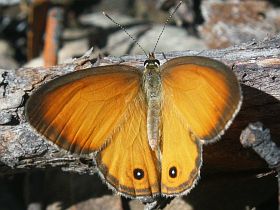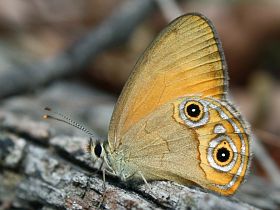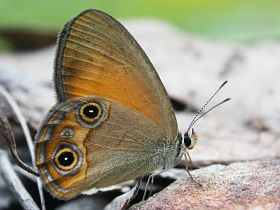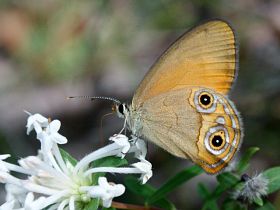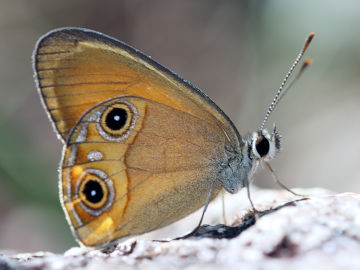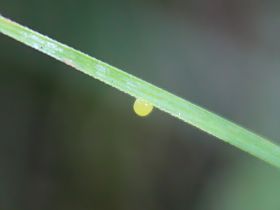Orange Ringlet
Hypocysta adiante
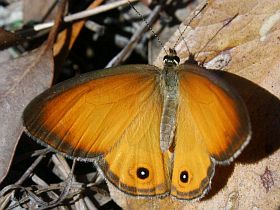
Appearance: Upperside almost uniformly orange with one or two small eyespots on the hind wing. Underside brown and orange with one small and two large eyespots on the hind wing. Similar to other species in the genus Hypocysta.
Wingspan: 3.0 cm
Season: Several generations all around the year.
Range: Northern and eastern Australia. Presumably extinct in VIC.
Habitat: Open woodland and open forest with a grassy understorey.
Notes
The Orange Ringlet is a common and widespread species across northern and eastern Australia, including north-eastern WA, northern NT, and along the east coast from Cape York in QLD all the way south to the NSW south coast. It does not occur in the ACT and is presumably extinct in VIC. The butterflies can be found in large numbers in open forest and woodland with a grassy understorey. They usually flutter close to the ground and regularly settle to rest or feed from flowers. In warm weather they are rather alert and not easy to approach.
Across eastern Australia there are several very similar species in the genus Hypocysta, namely the Orange-streaked Ringlet (Hypocysta irius), the Brown Ringlet (Hypocysta metirius), the Grey Ringlet (Hypocysta pseudirius), and the Rock Ringlet (Hypocysta euphemia). The Orange Ringlet can be readily distinguished from these species through its almost uniformly orange upperside with one or two small eyespots on the hind wing.
Additional Photos
